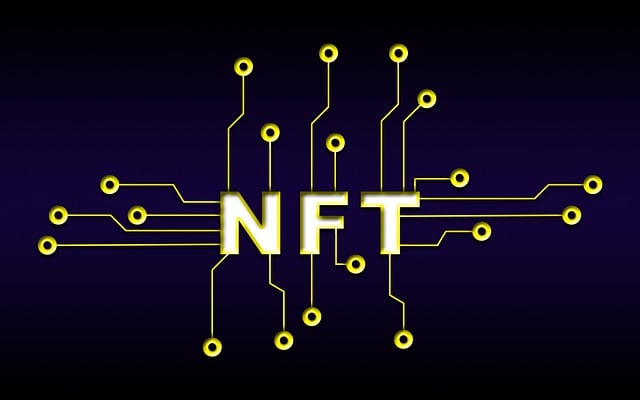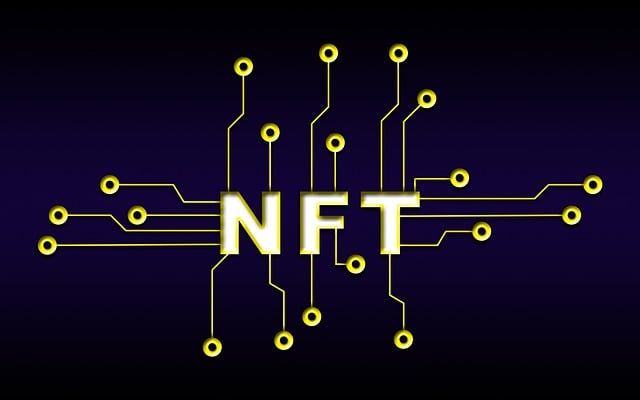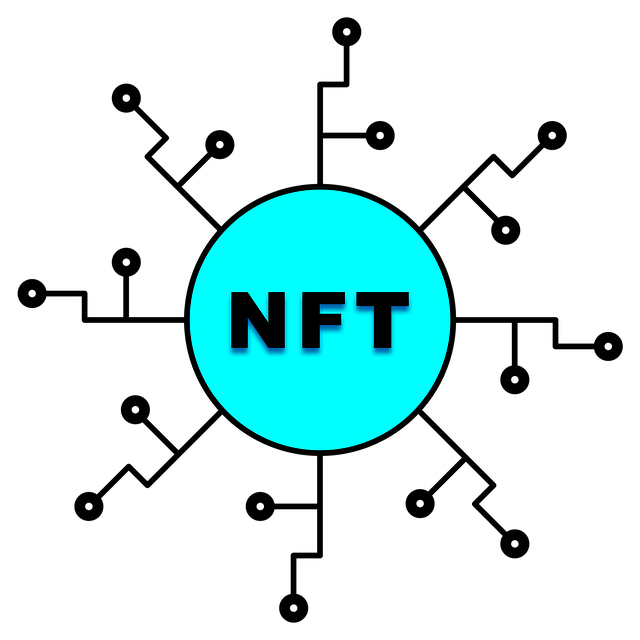Crypto Trading Telegram Bot GitHub Guide 2025
Author: Jameson Richman Expert
Published On: 2025-10-29
Prepared by Jameson Richman and our team of experts with over a decade of experience in cryptocurrency and digital asset analysis. Learn more about us.
Looking to automate your crypto trades with open-source code? This comprehensive guide explains how to find, evaluate, and deploy a crypto trading telegram bot github project in 2025 — from TradingView alerts to exchange execution, security hardening, testing, and real-world examples. Whether you want a lightweight webhook that places orders on Binance or a full-featured bot with backtesting, this article walks you step-by-step and links to tools, proven repositories, and resources to get started safely and effectively.

What is a crypto trading Telegram bot?
A crypto trading Telegram bot is a software program that connects signal sources (for example, TradingView alerts, algorithmic strategies, or signal channels) to cryptocurrency exchanges and automates trade execution while using Telegram as an interface for notifications, confirmations, and control. These bots can be self-hosted, open-source, and frequently shared on GitHub — which is why a "crypto trading telegram bot github" search is a common starting point for traders who want transparency and customizability.
For background on Telegram itself and its Bot API, see the Wikipedia page for Telegram for general architecture and capabilities.
Why use GitHub projects for Telegram trading bots?
- Open-source transparency: You can inspect how your funds and orders are handled rather than trusting closed-source providers.
- Community validation: Popular projects have issues, pull requests, and user feedback you can review to evaluate reliability.
- Extensibility: You can add indicators, integrate new exchanges, or adapt the bot to your risk rules.
- Reproducibility: GitHub repositories allow version control, CI/CD, and easier deployment (Docker, actions).
High-quality GitHub projects to research include CCXT (exchange adapters), Freqtrade (algorithmic trading framework), and specific Telegram-triggered bots. Inspect README, open issues, commit frequency, and tests to judge maturity.
Core components of a Telegram trading bot
Most production-ready bots share the same building blocks. Understanding these components helps you pick or build a secure, maintainable system:
- Signal source — TradingView alerts, Pine Script strategies, machine-learning signals, or human channel signals.
- Webhook receiver — A secure HTTP endpoint that accepts JSON alerts from TradingView or other services.
- Order execution layer — Exchange API adapter (CCXT is a common library) that places orders and checks fills.
- Telegram interface — Uses Telegram Bot API to notify users, ask for confirmations, and accept manual overrides.
- Risk manager — Position sizing, stop-loss, take-profit, max exposure, and concurrency control.
- Persistence — Database or lightweight storage for trade logs, positions, and state (SQLite, Postgres).
- Backtesting/simulation — A module to validate strategies against historical data before live runs.
- Monitoring & alerts — Uptime checks, logs, and metrics for failures, rate limits, and slippage.

Related keywords to include (naturally)
Search terms you’ll commonly see alongside the main keyword include: Telegram trading bot, TradingView alerts, webhook trading bot, automated crypto trading, CCXT, Python trading bot, Pine Script, Binance API, Bybit bot, backtesting framework.
TradingView + Telegram + GitHub workflow
One of the most popular workflows for building a telegram trading bot uses TradingView to generate signals, a GitHub repository to host the bot code and CI, a webhook receiver to accept TradingView alerts, CCXT to interact with exchanges, and Telegram for notifications. If you’re new to TradingView alerts and charts, this guide to using TradingView charts for free is a helpful primer: https://cryptotradesignals.live/can-i-use-tradingview-charts-for-free-complete-guide-2025/320340.
How to evaluate "crypto trading telegram bot github" repositories
When assessing GitHub projects, apply these checks:
- Activity: Recent commits and responses to issues indicate maintenance.
- Documentation: Clear README, setup steps, example config, and environment variables.
- Security practices: No hard-coded keys in the repo, instructions for secrets, and IP whitelisting guidance.
- Tests & CI: Unit tests or integration tests plus GitHub Actions are a plus.
- License: MIT, Apache, or similar licenses that allow forking and modification.
- Examples: Example TradingView alert payloads and Telegram message formats help integration.
- Dependencies: Use of well-known libs (CCXT, Requests, FastAPI, Flask) rather than obscure, unmaintained packages.
Popular building blocks used by many GitHub bots:
- CCXT — unified exchange library (https://github.com/ccxt/ccxt)
- Freqtrade — a algotrading framework with backtest and paper-trade features (https://www.freqtrade.io/)
- Docker — for consistent deployment

Step-by-step: Build a basic TradingView-to-Telegram trade executor
The following is a simplified blueprint you can adapt from many GitHub examples. It assumes basic Python experience.
1) Create accounts on exchanges
Open exchange accounts and generate API keys with appropriate permissions (usually trade, not withdrawal). Use separate accounts for testing:
- Binance (create account): https://accounts.binance.info/en/register?ref=12093552
- MEXC (create account): https://www.mexc.co/invite/customer-register?inviteCode=mexc-1bE4c
- Bitget (create account): https://www.bitget.com/referral/register?clacCode=WSVEGD6H&from=%2Fevents%2Freferral-all-program&source=events&utmSource=PremierInviter
- Bybit (create account): https://www.bybit.com/invite?ref=Q8QKORN
If you plan to use Bybit specifically and want practical steps, read this guide on buying Bitcoin on Bybit: https://cryptotradesignals.live/can-i-buy-bitcoin-on-bybit-with-debit-card-in-2025-step-by-step-guide-and-best-practices/320374.
2) Choose a GitHub repo or start one
You can fork an existing bot or start from scratch. If you prefer a full-featured framework, consider Freqtrade. For lightweight webhook-based bots, search GitHub for projects with "Telegram" + "webhook" + "CCXT".
3) Implement a secure webhook receiver
TradingView alerts send HTTP POST requests. A secure Flask/FastAPI webhook example (simplified):
# Example blueprint (do not paste production keys)
from flask import Flask, request, abort
import hmac, hashlib, json
app = Flask(__name__)
SECRET = "YOUR_ALERT_SECRET"
@app.route("/webhook", methods=["POST"])
def webhook():
sig = request.headers.get("X-Signature", "")
body = request.data
expected = hmac.new(SECRET.encode(), body, hashlib.sha256).hexdigest()
if not hmac.compare_digest(sig, expected):
abort(403)
data = json.loads(body)
# parse command and forward to execution engine
return {"status": "ok"}
Make TradingView include a signature header or shared secret in alert messages for verification. Store secrets in environment variables (do not commit them).
4) Parse TradingView alert format
Standard alert payloads often include fields like symbol, price, and custom message. Use a defined JSON format in TradingView's "Message" box so your webhook can parse intent (e.g., {"action":"BUY","symbol":"BTCUSDT","size_pct":1}). The TradingView guide referenced earlier shows how to craft alerts and use charts effectively: https://cryptotradesignals.live/can-i-use-tradingview-charts-for-free-complete-guide-2025/320340.
5) Execute orders via CCXT
Example pseudo-code to place a market buy on Binance (paper mode recommended first):
import ccxt
exchange = ccxt.binance({
'apiKey': 'YOUR_KEY',
'secret': 'YOUR_SECRET',
})
symbol = "BTC/USDT"
amount = 0.001
order = exchange.create_market_buy_order(symbol, amount)
Always check exchange documentation for throttling and margin vs. spot semantics — the Binance API docs are authoritative. Also consider paper trading or using testnet sandboxes if available.
6) Notify via Telegram and require confirmations (optional)
Use Telegram Bot API to send messages, summaries, and allow manual confirmations before execution for high-risk orders. You’ll need a Telegram Bot token and chat ID. Keep Telegram tokens in secrets.
Security hardening and best practices
Security is critical when automating trades. Follow these rules:
- Least privilege API keys: Disable withdrawals, and give the minimum trade privileges required.
- IP whitelisting: If your exchange supports IP restrictions, enable them for your server addresses.
- Separate keys for testing: Use different API keys for paper trading and live trading.
- Use environment variables and secret managers: Never commit keys to GitHub. Use GitHub Secrets for CI, or Vault/Secrets Manager for production.
- Rate limit handling: Implement retries with backoff and read exchange rate-limit headers.
- Logging and monitoring: Record every received signal, order attempt, result, and error to an append-only log or DB.
- Fail-safe rules: Maximum daily drawdown, max concurrent positions, and auto-stop on repeated critical failures.
For guidance on signal validation and long-term success using Telegram signals specifically, review this in-depth guide to Bitcoin signals on Telegram: https://cryptotradesignals.live/bitcoin-signals-telegram-in-2025-the-ultimate-guide-to-maximizing-crypto-profits-and-securing-long-term-success/320025.
Backtesting and simulation — don’t skip this
Before deploying live, backtest strategies on historical data and run a paper trading period. Freqtrade and other frameworks provide built-in backtesting tools. Proper backtesting helps you tune stop-loss and take-profit levels and estimate slippage.
If your bot is designed to trade altcoins or apply event-driven strategies, consult market analyses to align strategy parameters with expected volatility; for example, read the Ethereum price outlook and altcoin analysis here: https://cryptotradesignals.live/ethereum-price-prediction-chart-2025-in-depth-analysis-future-market-outlook/320092 and an XRP-focused strategy write-up here: https://cryptotradesignals.live/xrp-price-prediction-for-2025-bull-run-latest-videos-targets-and-strategy/320249.

Examples of practical bot flows
Here are a few real-world patterns you’ll encounter on GitHub:
- Instant execution from TradingView: TradingView alert → webhook → immediate market order. Suitable for high-frequency signals but requires robust rate-limit and slippage handling.
- Confirmation flow: TradingView alert → webhook → Telegram confirmation → manual/auto execute. Safer for large orders or discretionary trades.
- Batching & order aggregation: Collect signals for N seconds and place combined orders to reduce the number of API calls and avoid overtrading.
- Paper mode with shadow execution: Place simulated orders to maintain logs, and optionally place real limit orders with low size to test order flow.
Deployment: from GitHub to production
Common deployment options for GitHub-hosted bots:
- Docker: Containerize your app and run on a VPS (DigitalOcean, AWS EC2) or container service. Many GitHub bots provide Dockerfiles.
- Process managers: Use systemd, PM2, or Docker Compose to keep the bot running and restart on crash.
- CI/CD: Use GitHub Actions to run tests and automatically deploy to your production host when changes are merged to main.
- Monitoring: Integrate Sentry, Prometheus, or simple uptime monitors to get alerted on problems.
Testing checklist before going live
- Run unit tests and integration tests locally and on CI.
- Backtest the strategy with multiple market periods (bull, bear, sideways).
- Paper trade with live market data for at least several weeks.
- Verify proper handling of partial fills and order cancellations.
- Confirm logs are recorded and backups exist for critical data.
- Enable alerts for unusual behavior (e.g., repeated failures, unexpected open positions).

Regulatory, ethical, and legal considerations
Automated trading is subject to legal and tax considerations in many jurisdictions. Consider the following:
- Know your local laws: Some countries regulate algorithmic trading or require registration. Consult legal counsel if you automate significant capital or offer bots to users.
- Tax reporting: Keep precise records of trades for taxable events.
- Ethical use: Avoid market manipulation (spoofing, wash trading). Ensure your bot follows exchange terms of service.
- Disclosure: If you publish or monetize a bot repository, disclose risks and avoid promising guaranteed returns.
Common pitfalls and how to avoid them
- Hard-coded secrets in GitHub: Use .gitignore and secrets managers. Review commit history for accidental leaks.
- Blind trust in signals: Validate signals and have a risk manager in the execution path.
- Ignoring exchange specifics: Each exchange has different symbols, lot sizes, and margin behavior — normalize them with CCXT or a mapping layer.
- Poor error handling: Handle 4xx/5xx responses, network failures, and insufficient balance errors gracefully.
Resources, repositories, and educational links
Useful high-authority and community resources:
- CCXT library: unified exchange API abstraction — https://github.com/ccxt/ccxt
- Freqtrade algorithmic trading framework — https://www.freqtrade.io/
- TradingView documentation for alerts and webhook examples — see TradingView docs and community guides (refer to the TradingView charts guide linked above)
- Telegram Bot API docs — official Telegram bot documentation (https://core.telegram.org/bots)
- Wikipedia: Telegram — background on platform and architecture (https://en.wikipedia.org/wiki/Telegram_(software))

Real-world scenario: Automating altcoin signals
Suppose your strategy uses signals for ETH and XRP. You should:
- Backtest ETH and XRP strategies separately because liquidity and volatility differ (see Ethereum market outlook: https://cryptotradesignals.live/ethereum-price-prediction-chart-2025-in-depth-analysis-future-market-outlook/320092).
- Set token-specific risk parameters (max exposure for XRP might be lower than BTC due to slippage).
- Attach signal thresholds and confirmation rules for lower-liquidity tokens.
- Monitor pair-specific errors and liquidity warnings.
For an XRP-focused strategy and targets discussion, this write-up may provide useful background: https://cryptotradesignals.live/xrp-price-prediction-for-2025-bull-run-latest-videos-targets-and-strategy/320249.
Using Telegram signals responsibly
Telegram channels are a common source of signals. If your bot consumes external Telegram signals, verify and sanitize externally-provided content and avoid automatic execution from unverified sources. This reduces the risk of malicious or erroneous signals. For advice on maximizing crypto profits while securing long-term success from Telegram signals, read: https://cryptotradesignals.live/bitcoin-signals-telegram-in-2025-the-ultimate-guide-to-maximizing-crypto-profits-and-securing-long-term-success/320025.
Advanced features to look for on GitHub repositories
As you search for "crypto trading telegram bot github", prefer repos that provide:
- Role-based access and multi-user support for Telegram interaction.
- Paper trading mode and testnets integration (Binance testnet, Bybit testnet).
- Web UI or dashboard for monitoring open positions and P&L.
- Auto-upgrade or safe deployment patterns (immutable images, rollback).
- Strategy repository pattern to manage multiple algorithms.

Sample TradingView alert JSON and webhook parsing
Using a consistent JSON structure in TradingView "Message" reduces parsing errors. Example TradingView alert message:
{
"action": "BUY",
"symbol": "BTCUSDT",
"size_pct": 1,
"strategy": "ema_cross_15m",
"timestamp": "{{timenow}}"
}
Your webhook should validate the alert, run risk checks, log the request, optionally ask Telegram for confirmation, and then pass the order to the exchange adapter.
Where to find reliable GitHub examples
Search GitHub for these keywords and filters:
- "telegram trading bot ccxt" — for CCXT integrations
- "tradingview webhook telegram bot" — for projects specifically tying TradingView to Telegram
- "freqtrade telegram" — for Freqtrade plugins that post to Telegram
- Filter by recent commits and stars to find active repos
Operational checklist for going live
- Confirm legal/corporate requirements and tax handling.
- Set up exchange API keys with least privilege and IP whitelisting.
- Use a dedicated server with secure SSH keys and firewall rules.
- Run in paper mode for a predefined period, then a small live test.
- Monitor metrics and set automatic halt thresholds (e.g., 10% drawdown).
- Have a disaster recovery plan and secure backups for your database.

Further reading and deep dives
This guide is a practical starting point. For deeper market context and to align your automation with macro views, check these in-depth posts:
- TradingView charts free guide: https://cryptotradesignals.live/can-i-use-tradingview-charts-for-free-complete-guide-2025/320340
- Ethereum market outlook and prediction chart: https://cryptotradesignals.live/ethereum-price-prediction-chart-2025-in-depth-analysis-future-market-outlook/320092
- How to buy Bitcoin on Bybit (if choosing Bybit as your execution venue): https://cryptotradesignals.live/can-i-buy-bitcoin-on-bybit-with-debit-card-in-2025-step-by-step-guide-and-best-practices/320374
- Bitcoin signals on Telegram, long-term guidance: https://cryptotradesignals.live/bitcoin-signals-telegram-in-2025-the-ultimate-guide-to-maximizing-crypto-profits-and-securing-long-term-success/320025
- XRP strategy and targets: https://cryptotradesignals.live/xrp-price-prediction-for-2025-bull-run-latest-videos-targets-and-strategy/320249
Final recommendations
Searching for "crypto trading telegram bot github" will return many projects. Prioritize quality over speed: choose well-documented, actively maintained repositories; use paper trading and testnets; apply strict security practices; and keep operations simple until you have validated real-world performance.
If you want to begin experimenting today, open a test account on one of the major exchanges (links below) and start with a small, well-documented GitHub project:
- Binance signup: https://accounts.binance.info/en/register?ref=12093552
- MEXC signup: https://www.mexc.co/invite/customer-register?inviteCode=mexc-1bE4c
- Bitget signup: https://www.bitget.com/referral/register?clacCode=WSVEGD6H&from=%2Fevents%2Freferral-all-program&source=events&utmSource=PremierInviter
- Bybit signup: https://www.bybit.com/invite?ref=Q8QKORN
Remember: automation improves discipline and speed, but it does not remove market risk. Keep learning, test thoroughly, and treat any "crypto trading telegram bot github" project as a starting point that you must adapt and secure for your use case.
Disclaimer: This article is educational and not financial advice. Always do your own research, use small amounts when testing, and consult professionals for legal or tax guidance.